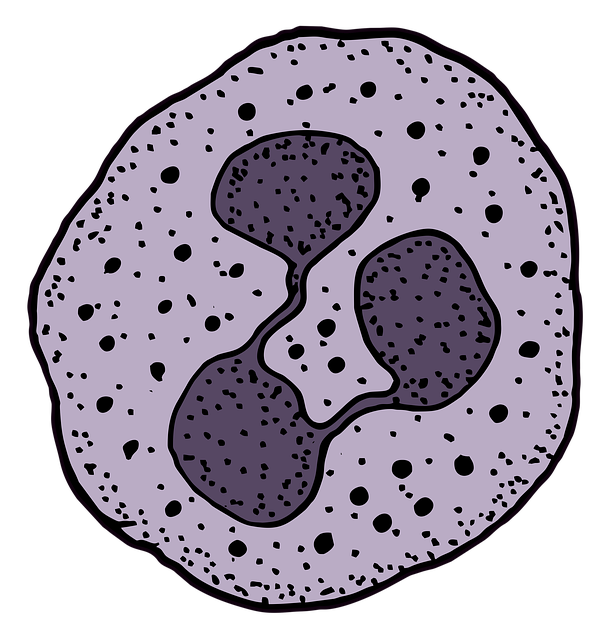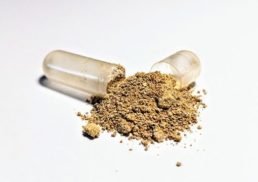Did you know that a simple enzyme called leukocyte esterase could play a crucial role in detecting urinary tract infections (UTIs)? What’s more, factors such as diet and lifestyle can significantly impact the levels of leukocyte esterase in your urine. In this blog post, we’ll dive deep into the world of leukocyte esterase, its importance in diagnosing UTIs, and how to maintain a healthy urinary tract through smart lifestyle choices.
Table of Contents
Key Takeaways
Leukocyte Esterase is an enzyme produced by white blood cells used to detect inflammation or infection in the urinary tract.
Elevated leukocyte levels may indicate a UTI, kidney stones or other sexually transmitted infections and require proper diagnosis and treatment.
Adopting good hygiene practices, making thoughtful dietary choices and managing stress are key for maintaining healthy urinary tract function.
Leukocyte Esterase: What Is It and How Does It Work?

Leukocyte esterase, an enzyme produced by white blood cells (WBCs), is a key player in detecting inflammation or infection in the urinary tract, including lower urinary tract infections. This enzyme is discharged by activated neutrophils when responding to bacterial infection, thereby playing a significant role in our immune system.
The leukocyte esterase test is often used in conjunction with a positive nitrite test to confirm the presence of a urinary tract infection. The presence of abnormal numbers of leukocytes in the urine, also known as pyuria, can be influenced by factors such as dilute urine, which may affect the concentration of leukocytes in the sample.
Importance of Leukocyte Esterase
The presence of leukocyte esterase in urine serves as a significant marker for urinary tract infections (UTIs) and other inflammatory conditions impacting the urinary system. This system carries urine from the kidneys to the bladder and out of the body. Therefore, leukocyte esterase in urine often signals an infection or inflammation within the urinary tract.
A random sample of urine should typically demonstrate specific gravity in the range of 1.002 to 1.035. To avoid contamination with vaginal secretions, it is advised to clean the area around the urethral opening prior to giving the sample. Other conditions, including kidney stones and sexually transmitted infections, are also linked to raised leukocyte levels.
The Test Process
The leukocyte esterase test employs a urine dipstick to identify the enzyme produced by white blood cells. It’s recommended to cleanse the area around the urethral opening before providing a sample. This can be achieved using cleansing wipes, and by holding the labia or foreskin aside to prevent false-positive results. It’s also advisable to collect the sample midway through urination.
The complete procedure of a leukocyte esterase test entails:
Collection of a urine sample
Testing the sample by utilizing a test strip or dipstick method
Applying urine on the test strip
Waiting for a color change
Interpreting the color change
Ascertaining the test result as positive or negative for leukocyte esterase.
Factors Affecting Leukocyte Levels in Urine

Various factors, including diet, hydration, and pre-existing medical conditions, can influence leukocyte levels in urine. For instance, dehydration can result in elevated leukocyte levels due to hemoconcentration. This occurs because dehydration leads to more concentrated urine, potentially causing higher leukocyte levels. On the other hand, maintaining adequate hydration can help preserve normal urine dilution and potentially lower leukocyte levels.
Medical conditions that may be associated with elevated leukocyte levels in urine include:
Urinary tract infections
Cystitis
Kidney infections
Inflammatory conditions
Understanding these factors is essential in interpreting the results of a leukocyte esterase test and diagnosing potential urinary tract issues.
Diet and Hydration
Maintaining a balanced diet and proper hydration aids in sustaining normal leukocyte levels in urine. Certain foods known to reduce inflammation, like grapes and garlic, along with food rich in folic acid, such as lentils and spinach, can influence leukocyte levels in urine. Furthermore, it is beneficial to avoid foods high in sugar, fat, and salt.
Dehydration can lead to an increase in the concentration of leukocytes in the urine. When the body is dehydrated, urine becomes more concentrated, resulting in elevated leukocyte levels. This can be indicative of inflammation or infection along the urinary tract. Ensuring proper hydration can help maintain a normal urine dilution and potentially reduce leukocyte levels.
Medical Conditions
It is known that the following conditions can lead to elevated leukocyte levels in urine:
Urinary tract infection (UTI)
Interstitial nephritis
Cystitis
Kidney infection (pyelonephritis)
Kidney stones can also have an influence on leukocyte levels in urine due to the increased risk of urinary tract infections that they may cause. These infections may result in elevated leukocyte levels in the urine.
The presence of sexually transmitted infections may lead to inflammation in the genitals and urinary tract, which in turn may trigger an immune response of the body resulting in an increased number of white blood cells, also known as leukocytes, in the urine. Identifying and addressing these medical conditions is crucial in maintaining a healthy urinary tract and preventing UTIs.
Interpreting Leukocyte Esterase Test Results
Comprehending the outcomes of a leukocyte esterase test is vital for diagnosing and managing urinary tract problems. The results of this test can be either positive or negative. A positive outcome denotes the presence of white blood cells in the urine, hinting at a potential urinary tract infection. In contrast, a negative outcome suggests the absence of white blood cells in the urine.
A negative leukocyte esterase test implies that an infection is unlikely and, without additional evidence, an infection is improbable. However, it is important to consider other factors that may influence the test results, such as diet, hydration, and underlying medical conditions, to ensure accurate diagnosis and appropriate treatment.
Normal Range
The standard range for leukocyte esterase in urine is fewer than 5 cells/HPF, characterized by a white or light cream color on the dipstick. A negative result on the leukocyte esterase test suggests that the leukocyte count falls within the normal range.
HPF stands for ‘high power field’ in leukocyte esterase testing. Maintaining leukocyte levels within the normal range is essential for preventing urinary tract issues and ensuring overall urinary tract health.
Abnormal Results
Elevated leukocyte levels may suggest the presence of a urinary tract infection or other inflammatory condition. A high white blood cell count is generally considered abnormal when it is greater than 11,000 cells per microliter of blood (11 × 10^9 per liter).
Abnormal leukocyte esterase levels can be identified through urinalysis, a urine test. Elevated levels of leukocytes or white blood cells in the urine may signify an infection or inflammation in the urinary tract or other medical issues. Identifying the cause of abnormal leukocyte levels and addressing the underlying issue is crucial for maintaining a healthy urinary tract.
Urinary Tract Infections (UTIs) and Leukocyte Esterase
Leukocyte esterase tests play a key role in identifying and managing UTIs. The relationship between leukocyte esterase levels and urinary tract infections (UTIs) is clear. This enzyme is discharged by white blood cells (WBCs) in response to bacteria present in the urine. An elevated leukocyte esterase level in the urine signifies the presence of WBCs, indicative of infection, including UTIs.
The leukocyte esterase test is not reliable in isolation for diagnosing UTIs. It is usually employed in conjunction with other tests, such as the nitrite test, to obtain more precise results.
Indications that might necessitate a leukocyte esterase test for a urinary tract infection include:
Cloudy or foul-smelling urine
Frequent urination
Pain or burning sensation when passing urine
Blood in the urine
Identifying UTIs
A positive leukocyte esterase test result may suggest a urinary tract infection (UTI), which necessitates further investigation and treatment. The indications of a Urinary Tract Infection (UTI) typically consist of:
Pain or burning when urinating
Frequent urination
Feeling the need to urinate in spite of having an empty bladder
Bloody urine
Pressure or cramping in the lower abdomen
Following a positive leukocyte esterase test, other tests that are generally conducted to verify a UTI include a nitrite urine test and a urine culture. Proper diagnosis and treatment are essential in addressing UTIs and preventing complications.
Treatment Options
Common treatments for UTIs often encompass antibiotics, pain relief medications, and boosting fluid intake to help flush out bacteria. The most commonly prescribed antibiotics for treating UTIs include nitrofurantoin, trimethoprim-sulfamethoxazole, cefaclor, cephalexin, and fosfomycin.
For UTIs, pain relief options that are suggested include:
Consuming ample amounts of water
Utilizing a heating pad
Ingesting over-the-counter pain medications
Attempting home remedies such as drinking sodium bicarbonate or herbal teas
It is suggested that individuals experiencing a UTI consume at least 1.5 liters of fluid per day.
Learn more, visit Treatment for Urinary Tract Infections: Antibiotics, Medication, and Home Remedies.
Other Conditions Associated with High Leukocyte Levels
Elevated leukocyte levels in urine have been observed to correlate with other conditions, such as kidney stones and sexually transmitted infections. Kidney stones are hard deposits of minerals and salts that form in the kidneys, which can cause pain and impede the flow of urine. Sexually Transmitted Infections (STIs) are infections that are spread through sexual contact, such as chlamydia, gonorrhea, herpes, trichomoniasis, and others.
It is important to be aware of the symptoms associated with kidney stones, which include severe abdominal, lateral, posterior, or inguinal pain, haematuria, an urgent need to urinate, and intermittent pain. Symptoms of urinary tract infections linked to elevated leukocyte levels may include fever, chills, perspiration, nausea, vomiting, and intense pain.
Early detection and treatment of these conditions are crucial for maintaining a healthy urinary tract.
Kidney Stones
Kidney stones can lead to inflammation and an increase in leukocyte levels in urine, necessitating medical care for resolution. The process of kidney stone formation is a multi-step one that commences with the nucleation of free ions into microscopic particles. Subsequently, crystal growth, crystal aggregation, and crystal attachment occur, culminating in the formation of a stone. The most commonly found type of kidney stone is formed when oxalate, a byproduct of certain foods, binds to calcium during the urine-making process in the kidneys.
Kidney stones can cause inflammation in the urinary tract when they become lodged in the ureters, thus obstructing the flow of urine and resulting in swelling in the kidney. Symptoms of kidney stones may include:
Pain
Frequent urination
Fever
Chills
Elevated white blood cell count
These symptoms may indicate high leukocyte levels in urine in conjunction with kidney stones.
Diagnosis of kidney stones is accomplished through a combination of medical history, physical examination, and imaging tests such as CT scans, which can serve as a screening test.
Sexually Transmitted Infections
Certain sexually transmitted infections can lead to elevated leukocyte levels in urine, highlighting the need for appropriate testing and treatment. STIs such as chlamydia, gonorrhea, herpes, and trichomoniasis, among others, may be reflected in elevated leukocyte levels in urine. It is possible that elevated leukocyte levels in urine may be a sign of inflammation or infection in the urinary tract, including the bladder or kidney. Common symptoms may include cloudy urine, pus in the urine, urinary symptoms, and signs of genital tract inflammation. It is imperative to consult a healthcare professional for proper diagnosis and treatment.
Sexually transmitted infections can impact leukocyte levels in urine by prompting the presence of leukocyte esterase or a higher-than-normal white blood cell count. Diagnostic tests for sexually transmitted infections that cause raised leukocyte levels in urine include:
Urine analysis
Blood tests
Nucleic acid amplification tests (NAATs)
Leucocyte esterase dip-stick tests
Preventing UTIs and Maintaining a Healthy Urinary Tract
Maintaining a healthy urinary tract and preventing UTIs require good hygiene practices and wise dietary and lifestyle choices. To protect the urinary tract and prevent UTIs, it is advisable to uphold proper hygiene and make thoughtful dietary and lifestyle choices.
Research has shown that a regular diet high in animal proteins can lead to more acidic urine, potentially promoting urinary tract infections. In contrast, a balanced vegetarian diet rich in phytochemicals may have a bactericidal effect against UTIs. However, studies have not established diet or fluid intake as independent risk factors for recurrent UTIs.
Hygiene Practices
Upholding proper genital hygiene is crucial in minimizing the risk of urinary tract infections. Such hygiene practices include:
wearing cotton underwear
changing it daily
regularly washing the genital area to keep it clean and dry
wiping from front to back
Wiping from front to back is crucial to prevent UTIs as it helps limit the spread of bacteria from the anal region to the urethra.
To prevent UTIs, men should adhere to the following hygiene practices:
Regularly wash the genital area with soap and water.
Wipe from front to back after using the toilet to prevent bacteria from entering the urethra.
Consume ample amounts of fluids to remain hydrated.
Empty the bladder before and after sexual activity.
Wash the genitals before and after sexual activity with warm water and mild soap.
Diet and Lifestyle Choices
A balanced diet is essential for urinary tract health as it assists in sustaining a healthy pH balance in the urine, thereby decreasing the risk of UTIs. Ensuring proper hydration can help maintain a normal urine dilution and potentially reduce leukocyte levels.
Caffeine and alcohol can be irritating to the urinary tract and can increase the risk of UTIs. It is advisable to limit or abstain from consuming these substances to ensure a healthy urinary tract.
Some lifestyle choices that can contribute to urinary tract health include:
Maintaining a nutritionally balanced diet
Ensuring adequate hydration
Adhering to good hygiene practices
Limiting caffeine and alcohol intake
Engaging in regular physical exercise
Managing stress levels
Summary
In conclusion, leukocyte esterase is a vital tool in detecting urinary tract infections and maintaining a healthy urinary tract. By understanding the factors that influence leukocyte levels in urine, such as diet, hydration, and underlying medical conditions, we can take appropriate steps to prevent UTIs and ensure optimum urinary health. Remember to practice good hygiene, consume a balanced diet, stay well-hydrated, and consult a healthcare professional if you suspect a UTI or other urinary tract issue.
Frequently Asked Questions
Should I worry about leukocytes in urine?
Leukocytes in your urine can be a sign of infection, so if your doctor has tested your urine and found too many leukocytes, it’s important to have the urine examined under a microscope to determine if there is an infection. You should discuss further action with your doctor.
What STD is a trace of leukocyte esterase?
A trace of leukocyte esterase is a possible indicator of Chlamydia or another infection, and it can be tested for cost-effectively in asymptomatic adolescent males via a random urine specimen.
What is the difference between leukocytes and leukocyte esterase?
Leukocytes are white blood cells, while leukocyte esterase is a protein found within these white blood cells. The leukocyte esterase test is used to detect the presence of intact or broken leukocytes in urine.
What is the normal range for leukocytes?
The normal range of leukocytes typically falls between 4,500 to 11,000 per microliter. Values may vary slightly between labs, so it is important to discuss any results with a provider.
What are leukocytes?
Leukocytes, commonly known as white blood cells, are part of the immune system that protect the body from infection. They circulate in the blood, responding to injury or illness, and help mount inflammatory responses.










